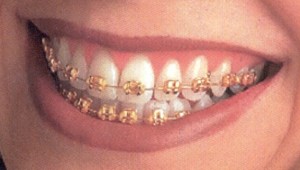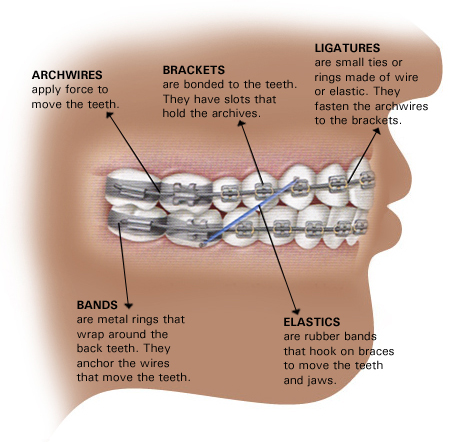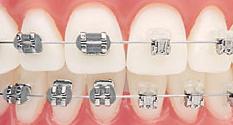As dental awareness is growing and adult with braces are becoming more socially accepted, an increasing number of adults are seeking orthodontic treatment.
Fixed orthodontic appliances (or commonly known as dental braces) include orthodontic devices, which have attachments that are fixed on to the tooth surface and forces are exerted via these attachments using archwires and or other auxiliaries (assisting devices) such as ligature wire. Dental braces are thus capable of a greater range of movements than is possible with a removable orthodontic appliance. The fixed appliance cannot and should not be adjusted or removed by the wearer.
When are orthodontic braces indicated?
Teeth braces are needed when multiple tooth movements are required in the mouth.
Contraindications for fixed adult braces
- Poorly motivated individual – You should understand that your full cooperation will be required throughout treatment. Your responsibility is not limited to maintaining good oral hygiene but will also involve wearing elastics and keeping appointments at regular intervals.
- Poor dental health – An individual who does not maintain oral hygiene routinely cannot be expected to maintain the stringent oral hygiene procedures required with fixed appliances in place. A person with poor oral hygiene will be more likely to suffer from periodontal disease.
- Misalignment of teeth beyond the scope of dental braces – Severe misalignment of teeth due to skeletal problem may require surgical intervention as part of the orthodontic treatment plan. Orthognathic surgery may be a necessary and is preferred rather than proposing compromises and not achieving stable results.
Components of dental braces
The components which form any fixed system can be divided into two categories depending on their ability to generate forces on the teeth.
Active components
Components capable of generating tooth moving forces are categorized under active components. These include:
- Separators – These are used to create space in between two teeth, generally for the purpose of banding them.
- Archwires – Archwires are the base wires, which are engaged in the brackets of various systems. These are used to provide a proper arch form and/or provide a stable base to which assisting devices can be attached to generate the tooth moving forces.
- Elastics – These rubber bands are commonly used auxiliaries for delivering force.
- Elastomeric modules – These are very small elastic bands and are used to secure the archwire in the archwire slot.
- Springs – These are used to generate tooth moving forces. Coiled springs are used to hold or expand space.
Passive components
Components of dental braces which are not capable of generating tooth moving forces but help in providing attachment for other devices attached to the tooth or retaining other active components of the appliances are called passive components. These include:
- Bands – These are metal attachments that are cemented to individual teeth and provide a place for attachment of other assisting devices.
- Brackets – These are devices that are bonded to the teeth and have slots to hold the archwire.
- Buccal tubes – These are generally used on molars and help provide better control of these anchor teeth.
- Lingual attachments – These are accessory attachments other than brackets and tubes which are placed on the lingual aspect of teeth or bands.
- Hooks – These are used to hold the elastics (rubber bands).
What are ligature wires?
Ligature wires are soft stainless steel wires of 0.008 to 0.010 inch in diameter. These may be used to hold or ligate the archwire in brackets or to tie segments of teeth together by wrapping around the brackets attached on teeth. The ligature wires are flexible and can be twisted to tighten and secure the archwire in place during the later stages of treatment.
Ligature wires vs Elastomeric modules vs Self-ligating brackets
Placing ligature wires around brackets to hold archwire in the bracket slots is a time-consuming procedure. The elastomeric modules (very small rubber bands) largely replaced the traditional stainless steel ligature wires because they are quicker and easier to place. Â The elastic bands are usually more comfortable for the wearer and they can be used in chains to close small spaces within the arch and prevent spaces from opening.
Modern orthodontic systems have introduced self-ligating brackets which have either a rigid, or spring clip, or retaining springs to hold an archwire in the bracket slot therefore doing away with ligature wires as well as elastomeric modules. These self-ligating brackets cover less tooth surface hence plaque accumulation around the area will be less compared to elastomeric modules.
What to do if my ligature wire breaks?
If your ligature wire breaks during treatment, contact your orthodontist to get it replaced. Do not try to remove it yourself or you could get injured.


